The meat and seafood alternatives you’ve probably never heard of
You’ve probably heard of tofu, jackfruit and even plant-based mince, but how about hearts of palm or lotus root? Hannah Twiggs tries out some of the lesser known meat alternatives

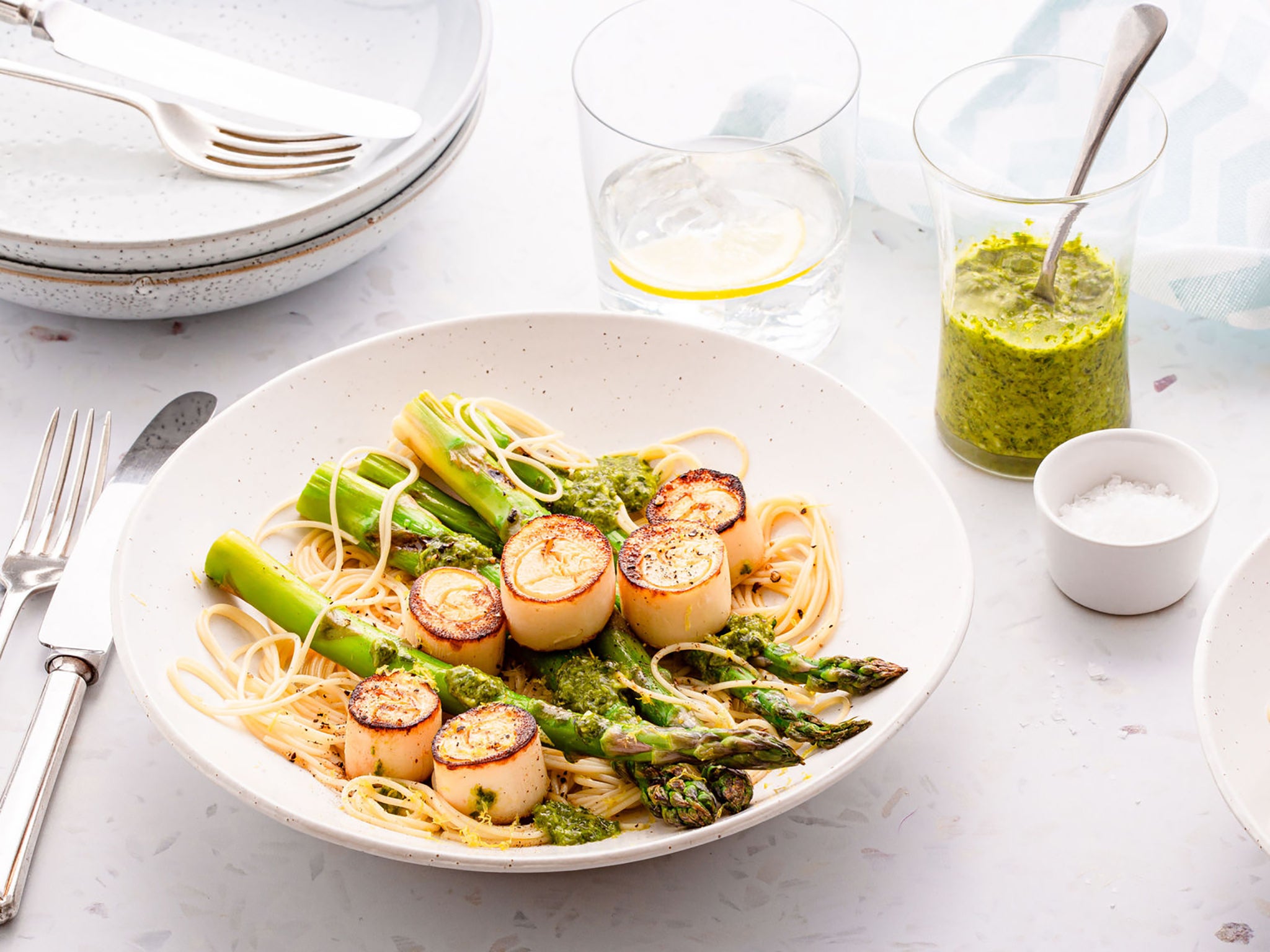
Your support helps us to tell the story
From reproductive rights to climate change to Big Tech, The Independent is on the ground when the story is developing. Whether it's investigating the financials of Elon Musk's pro-Trump PAC or producing our latest documentary, 'The A Word', which shines a light on the American women fighting for reproductive rights, we know how important it is to parse out the facts from the messaging.
At such a critical moment in US history, we need reporters on the ground. Your donation allows us to keep sending journalists to speak to both sides of the story.
The Independent is trusted by Americans across the entire political spectrum. And unlike many other quality news outlets, we choose not to lock Americans out of our reporting and analysis with paywalls. We believe quality journalism should be available to everyone, paid for by those who can afford it.
Your support makes all the difference.If you’re giving Veganuary a go, you might have stumbled across the same issue I have: there’s just some things that can’t be replaced. For me, that’s the tender texture and mild sweetness of seafood.
Now, I’m not saying I’ve found the answer, but I’ve come pretty close. Heart of palm, as you can probably infer, is the cylindrical vegetable harvest from the inner core of certain palm trees, mainly found in central and South America and parts of Asia.
While tofu and jackfruit get all the attention as the best meat replacement, hearts of palm are particularly adept at masquerading as seafood thanks to their mild flavour and soft texture. Similarly to tofu and jackfruit, hearts of palm are a great blank canvas for all sorts of flavour profiles.
Slice into 1 inch-think rounds, pop out the centre, douse in batter, pan fry in garlic butter and drizzle with lemon juice and parsley and you’ve got yourself vegan calamari. The recipe below follows the same tactics, but adds pasta and asparagus for a heartier meal. I also tried chopping it up into chunks and smothering in vegan mayo, sriracha and spices in lieu of marinated tofu in a poke bowl.
Can you tell the difference? Well, yes, you definitely can but the similarities are more important than the differences here. The only thing you need to master is the flavour, as the hearts will absorb whatever you marinate or cook them in. Trust me, once you’ve done that, Veganuary will never be the same again.
Depending on where you live, it’s not necessarily the easiest ingredient to come by, but if you can find it, it’s well worth the trek. I got mine from specialist food importers Cooks&Co, which can be found on Ocado, alongside a whole host of other vegan goods such as artichoke hearts, lotus root and banana blossom.
Here’s some other recipes to show you just how versatile hearts of palm and other alternatives can be.
Vegan hearts of palm ‘scallops’ with pesto
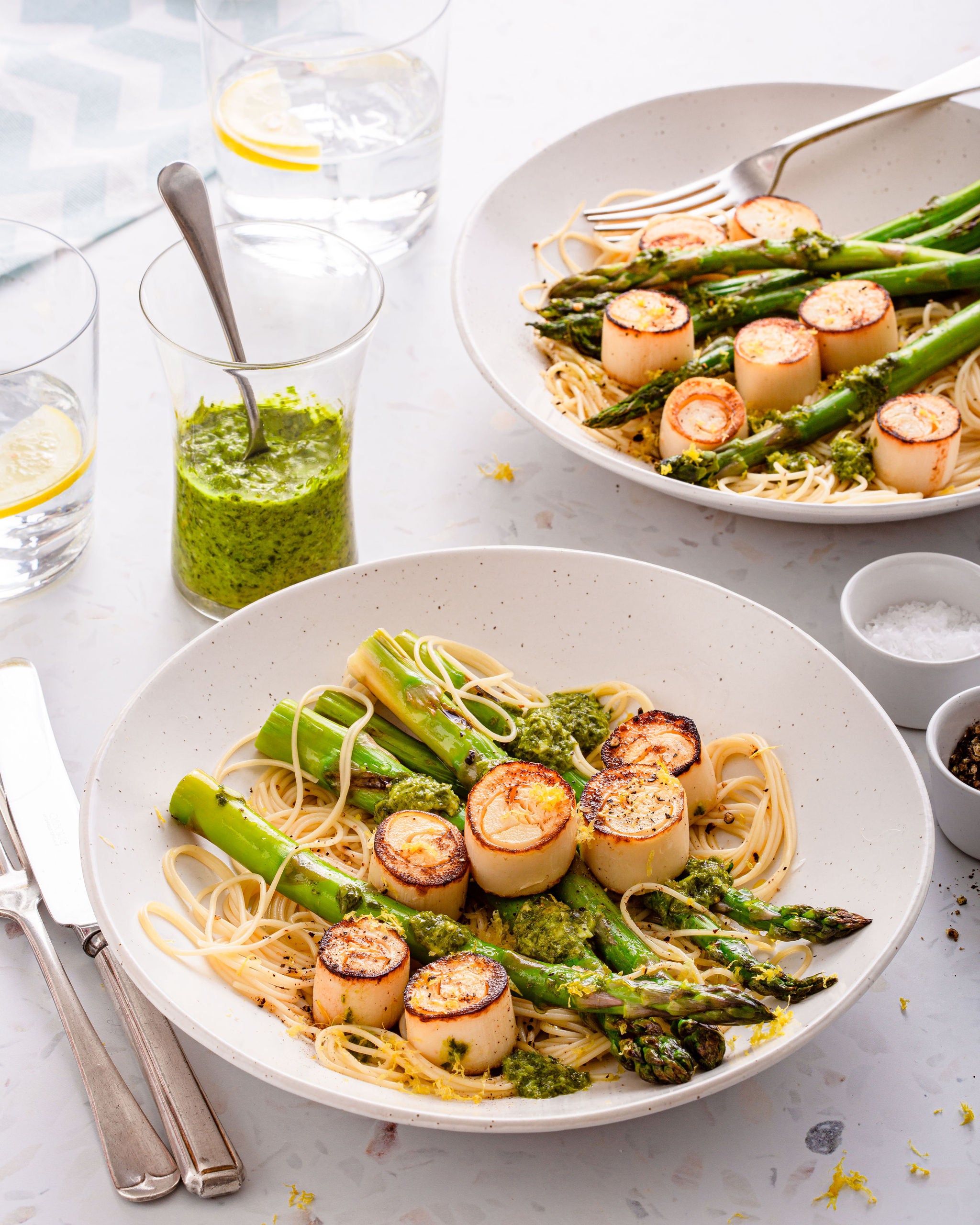
Serves: 2 as a starter or as a main with 150g pasta
Time: 25 mins
Ingredients:
1 small clove garlic
½ lemon, zest and juice
15g nuts (pine nuts, walnut, almonds, pistachios)
30g fresh soft herb leaves (basil, parsley, mint)
4 tbsp/60ml + 1 tsp/5ml olive oil
250g asparagus, tough ends trimmed
1 x 400g tin Cooks&Co hearts of palm
Salt and freshly ground black pepper
Method:
If serving with pasta, start making the pasta according to the packet instructions.
Crush the garlic into a food processor, squeeze over about 2 teaspoons of lemon juice and leave for 10 minutes – the lemon juice helps soften the raw garlic taste. Add the nuts and blend to finely chop, then add the fresh herb leaves and blend again to finely chop the leaves. With the food processor running, drizzle in 3 tablespoons of olive oil to make a pesto, scraping down the machine as needed.
Heat a large frying pan or griddle pan over medium-high heat until very hot (use a hot grill instead if you only have one frying pan). Brush the asparagus with 1 teaspoon of olive oil and lay the asparagus in the hot pan in an even layer. Sear on one side for 3-4 minutes (this works best with a heatproof weight laid on top to press down the spears), then turn the asparagus and sear on the other side for a further 2-3 minutes. Arrange the asparagus on 2 plates and squeeze ½ teaspoon of lemon juice over each portion of asparagus. Season to taste with salt and lots of black pepper.
Meanwhile, drain and rinse the hearts of palm, then slice each stem widthways into 4 scallop-like rounds. Heat a large, heavy frying pan over medium heat until hot, add the last tabelspoon olive oil and swirl to evenly coat the pan. Add the rounds in a single layer, cut sides down, and cook without moving or stirring until golden brown on one side, 2-3 minutes. Carefully flip and cook for another 2 minutes until browned on the other side.
Arrange the hearts of palm over the asparagus, spoon over the pesto and garnish with the lemon zest.
Make ahead: The pesto can be made ahead and stored in an airtight container in the fridge for up to 1 day, however the colour will start to darken. It can be stored in the freezer for up to 1 month with no colour change. The rest of the dish is not suitable for making ahead as the asparagus will soften and darken.
Leftovers: Leftovers can be stored in an airtight container in the fridge for up to 3 days. Not suitable for freezing. Reheat in the oven at 160C for 5-10 minutes until piping hot all the way through.
Warm Mediterranean-style artichoke salad
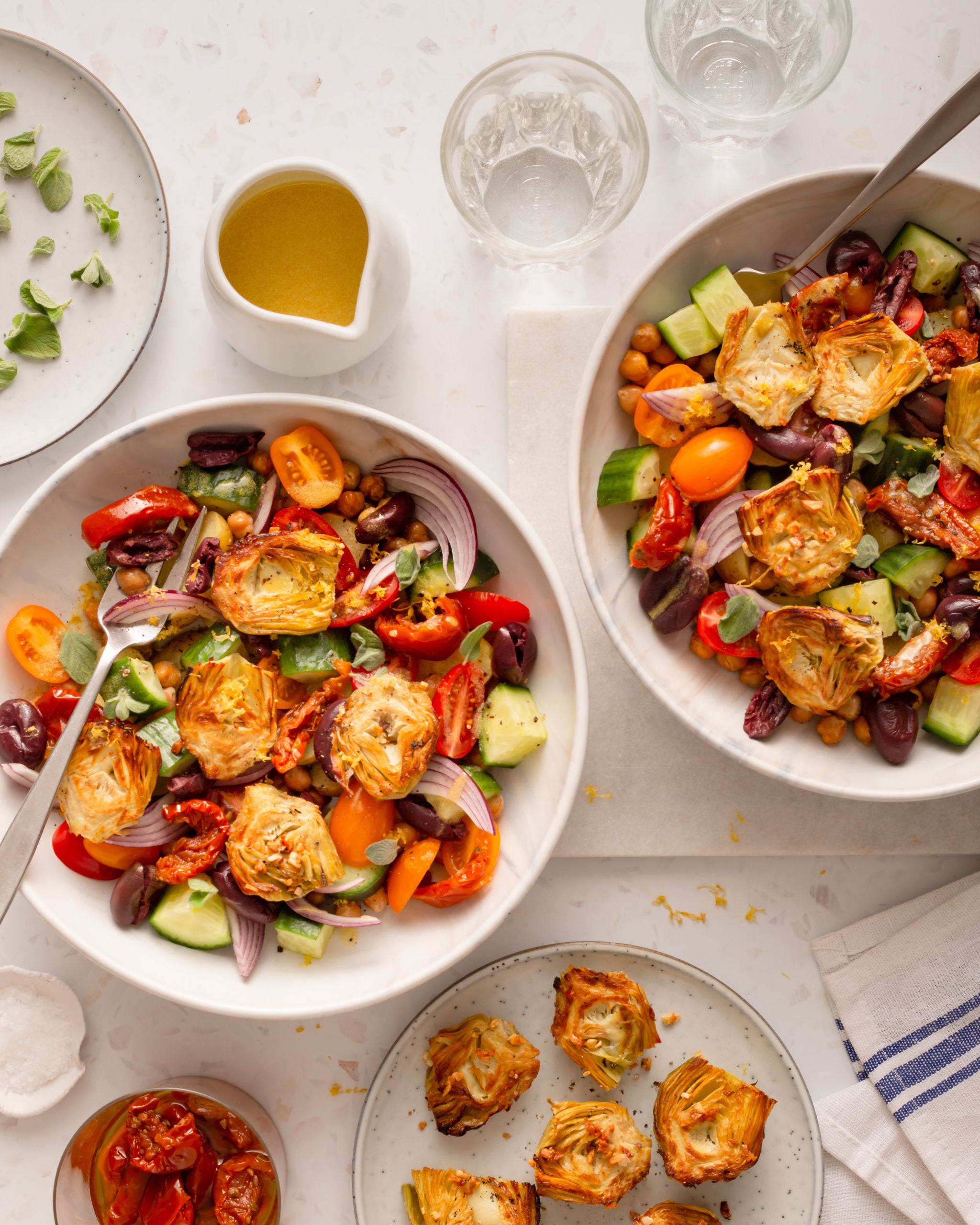
Serves: 2 as a hearty lunch or dinner
Time: 1 hr
Ingredients:
200g/½ cucumber
140g/10-12 cherry tomatoes
½ lemon, zest and juice, plus more lemon zest to garnish
2 tsp Dijon mustard
1 tbsp + 1 tsp olive oil
300g/8-10 baby potatoes
1 x 390g tin Cooks&Co artichoke hearts
1 x 400g tin Cooks&Co chickpeas
1 large garlic clove, finely chopped (not crushed)
15 pieces Cooks&Co sun-dried tomatoes, well drained
½ small red onion, peeled
50g black olives, stones removed
10g fresh oregano, leaves only
Salt and freshly ground black pepper
Method:
Cut the cucumber in half then quarters lengthways, then chop widthways into 1-2cm chunks. Halve or quarter the cherry tomatoes and transfer both to a small bowl. Sprinkle evenly with a good pinch of salt (or to taste), toss to combine and set aside – this helps drain excess liquid and improve flavour.
Zest the lemon into a medium mixing bowl and add the mustard. Gradually whisk in the juice of the lemon, then 1 tabelspoon of olive oil. Season with a pinch of salt (or to taste) and lots of black pepper.
Set a sieve, colander or steamer over a medium pan with water and bring to the boil. Add the potatoes, cover with a lid and steam for 25-35 minutes, until just tender (depending on the size of the potatoes).
While the potatoes are cooking, place 2 baking trays in the oven and preheat the oven to 200C fan. Drain and rinse the artichokes in a sieve. Slice each artichoke in half, transfer to a small bowl and drizzle over the final teaspoon of olive oil. Drain and rinse the chickpeas. When the baking trays and oven are hot, arrange the artichokes in a single layer on one of the trays, cut side down. Scatter the chickpeas over the other tray. Place both trays in the oven and roast until the artichokes are lightly browned on the cut side and the chickpeas are golden, about 15 minutes. Remove the chickpeas from the oven, sprinkle over the chopped garlic and roast everything for 3-4 more minutes, until the garlic is lightly browned and crispy – be careful not to burn the garlic as it becomes very bitter. Gently transfer the artichokes to a small plate and season with black pepper. Transfer the chickpeas and crispy garlic to a medium mixing bowl.
When the potatoes are ready, halve or quarter them and add to the bowl with the chickpeas. Thinly slice the sun-dried tomatoes and add to the bowl. Drizzle over half the dressing and gently toss to combine.
Cut the ½ onion in half lengthways (to make quarters), then slice each quarter lengthways into very thin fans. Tear or cut the olives in half if they are large.
Divide the warm chickpeas and potatoes between 2 bowls or plates. Drain any juices from the cucumber-tomato mix and whisk the juices into the remaining dressing, then divide the cucumber-tomato mix between the bowls. Scatter over the onion slices, olives and fresh oregano. Drizzle over the remaining dressing and garnish with more lemon zest.
Make ahead: The salad can be made up to 1 day ahead, stored in an airtight container in the fridge and served cold or at room temperature.
Leftovers: Store leftovers in the fridge in an airtight container for up to 3 days and serve either cold or at room temperature. Not suitable for freezing.
Lotus root crisps
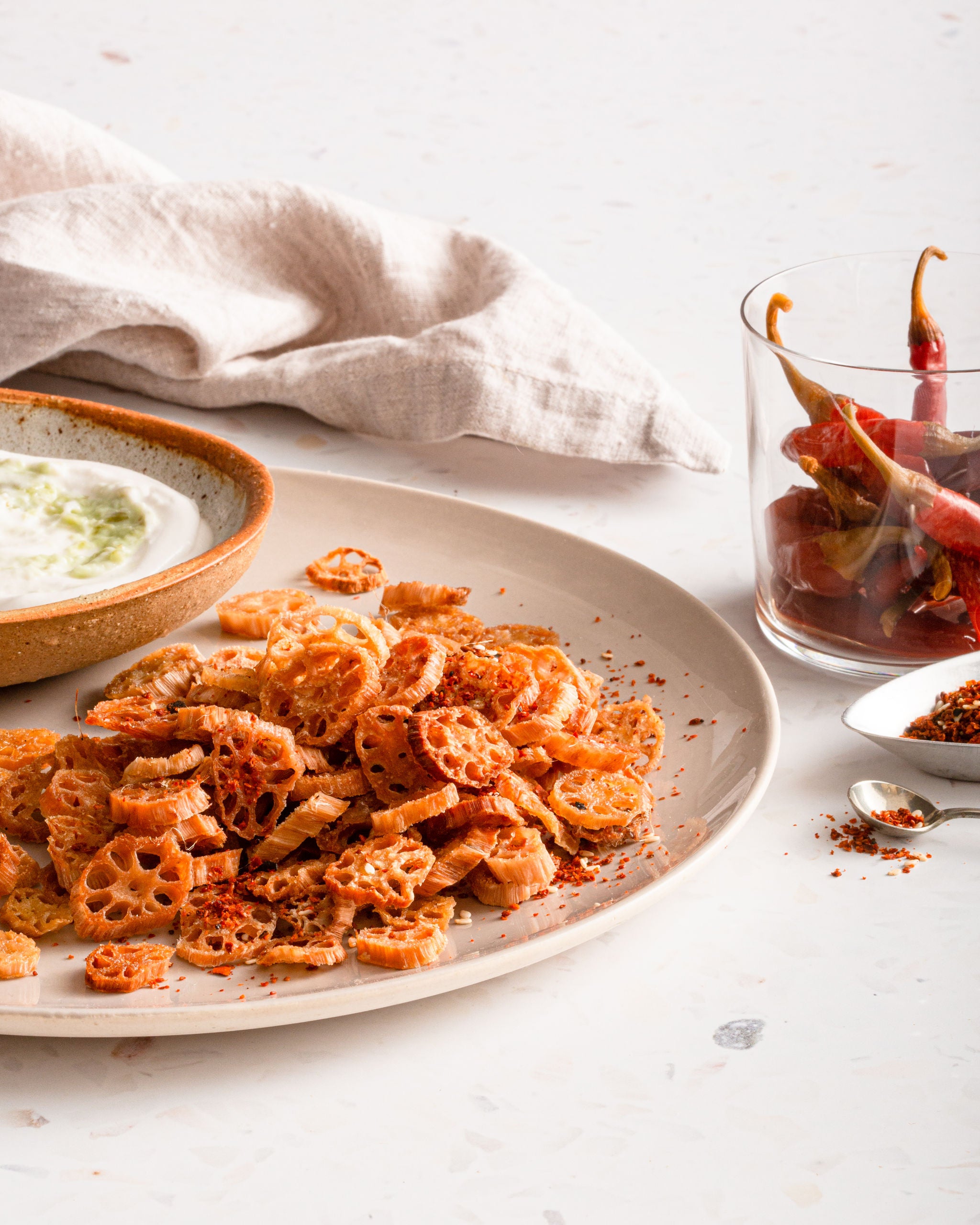
Serves: 4 as an appetiser/snack
Time: 10 mins prep, plus 20-25 mins cook
Where to buy: Japanese 7-spice seasoning typically contains red chilli, orange peel, Sichuan peppercorns, black and white sesame seeds, poppy seeds and ground ginger. It’s available in east Asian food shops, some of the major supermarkets or lots of places online – but if you don’t have it, you can use any kind of seasoning for this recipe.
Ingredients:
100g plant-based yoghurt
1 tsp wasabi paste
2 x 400g tin Cooks&Co lotus root
2 tbsp olive oil, sunflower oil or Cooks&Co sesame oil
½ tsp Japanese 7-spice seasoning (also called shichimi togarashi or nanami togarashi)
Method:
Whisk together the plant-based yoghurt and wasabi paste, then set aside in the fridge to infuse while you prepare the crisps. Preheat the oven to 175C fan.
Drain and rinse the lotus root in a colander or sieve and shake to remove excess water. Discard any very small or thin pieces as they will burn during roasting, then pat the rest dry with paper towel.
Brush 2 baking trays with half of the oil (no need to line with paper). Arrange the lotus root pieces on the trays in a single layer without touching and gently brush/dab on the rest of the oil.
Place in the middle of the oven and roast for 10 minutes, then turn the tray so they cook evenly and roast for a further 5 minutes. Remove from the oven and transfer any very crisp pieces (usually the smaller, thinner pieces) to your serving plate, then return the trays to the oven for 5-10 more minutes, until all the pieces are golden brown and very crispy.
Remove from the oven and transfer the rest to the serving plate, then sprinkle over the 7-spice seasoning.
Serve with the wasabi yoghurt for dipping.
Make ahead/leftovers: Store in an airtight container or bag with the air pressed out for up to 2 days. Not suitable for freezing. Rewarm in the oven at 170C fan for 3-5 minutes to re-crisp.
‘Korean fried chicken’ jackfruit
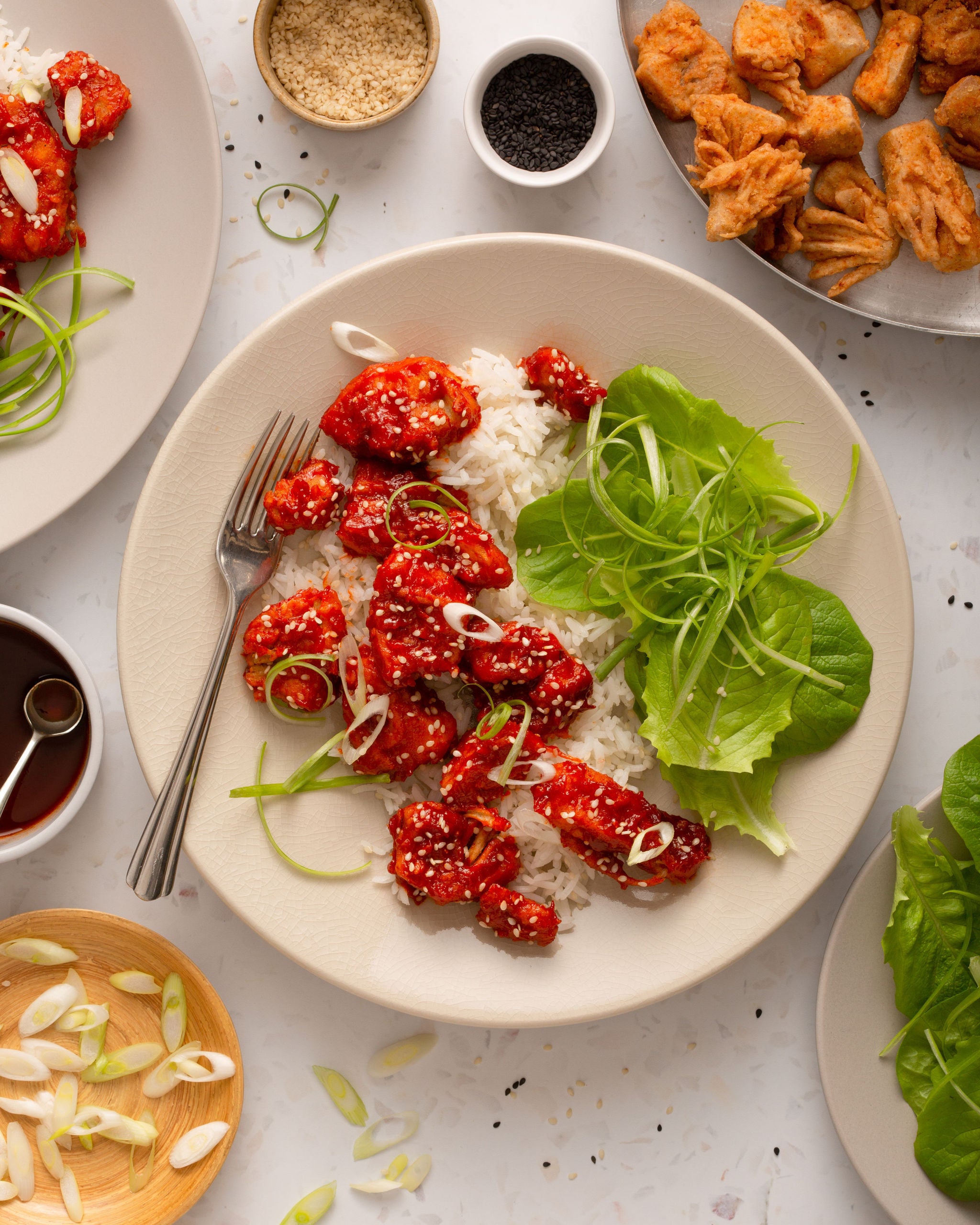
Serves: 4 as a main course
Time: 1 hr 15 mins
Where to buy: You can get gochujang in east Asian food shops, some of the major supermarkets or lots of places online. If you’re in a pinch, you can substitute with another type of chilli paste or 1 tablespoon red chilli flakes mixed with 1 tablespoon soy sauce and 1 tablespoon miso paste for the 4 tablespoon gochujang.
If you don’t have some of the other ingredients, don’t let that put you off – you can leave things out or swap with something similar that you have on hand.
Tip: If you don’t have a thermometer to check the temperature of the frying oil, put a piece of uncooked popcorn in the oil as you start to heat it – it will pop when the oil reaches 175C. If you don’t have any popcorn, you can heat the oil, then dip in the end of a wooden spoon to check the temperature – if the oil starts bubbling around the wood, the oil is hot enough to fry (very vigorous bubbling means it’s too hot).
Ingredients:
For the crispy fried jackfruit:
2 x 400g tins Cooks&Co young green jackfruit
300ml plant-based milk
1 tbsp rice vinegar (or any other vinegar)
3 tsp garlic granules
1 tsp ground white pepper
100g plain flour
100g cornflour
1 tsp baking powder
2 tsp smoked paprika
1 tsp chilli flakes
1 tsp celery salt
1 litre sunflower oil (12g used per portion)
For the Korean-style spicy sauce:
1 tbsp sesame oil
3 cloves garlic, crushed
1.5cm piece ginger (about 3 tsp grated), finely grated
4 tbsp gochujang paste
2 tbsp tomato ketchup
1 tbsp brown sugar (or maple syrup, golden syrup or any other sugar)
1 tbsp rice vinegar (or any other vinegar)
2 spring onions, trimmed and thinly sliced diagonally
1 tsp sesame seeds
For the spring onion salad:
1/2 head soft lettuce
2 spring onions
1 tsp soy sauce or gochujang paste
1/2 tsp rice vinegar
1/2 tsp brown sugar
For the jasmine rice:
300g jasmine rice
Method:
Drain and rinse the jackfruit in a sieve. Trim off any very tough pieces (usually the pointed end of each piece) and remove any seeds; discard both. Gently pull each piece apart a little to reveal some shreds, but try not to divide the pieces as they are already quite small.
Whisk together the plant-based milk and vinegar in a medium mixing bowl, leave to thicken for 1 minute, then whisk in 2 teaspoons of the garlic granules and ½ teaspoon of the white pepper. Add the jackfruit pieces, making sure they are all covered in the marinade and set aside for 30-60 minutes. This helps draw out the brine and season the jackfruit.
Meanwhile, in a separate medium mixing bowl, whisk together the plain flour, cornflour, baking powder, paprika, chilli flakes, celery salt and remaining garlic granules and white pepper.
To prepare the salad and dressing, trim both ends of the spring onions, cut into thirds, then slice each length into thin strips. Transfer to a bowl of ice water for 10 minutes to crisp up and remove some of the sharp onion flavour, then spin dry in a salad spinner or shake off the water in a sieve/colander. Cut the lettuce into bite-sized pieces. In a small bowl, whisk together the soy sauce or gochujang, rice vinegar, brown sugar and 1 teaspoon water. Wait until just before serving to mix the dressing with the salad.
Prepare the rice according to the packet instructions or using the absorption method with 475ml water water for 300g jasmine rice.
To make the sauce, heat the sesame oil in a large frying pan over low-medium heat, add the garlic and ginger and cook for 2-3 minutes, stirring constantly. Add the gochujang paste, ketchup, sugar, vinegar and 1 tablespoon water, stir to thoroughly combine and cook for 2 more minutes to bring the flavours together. Keep warm over very low heat while you prepare the jackfruit.
Remove 1 piece of jackfruit from the marinade, shake off any excess liquid, then add to the flour mix and toss to coat. Repeat with the rest of the jackfruit pieces, tossing and shaking the bowl so all the pieces are fully coated in the seasoned flour. Remove each piece to a plate, shaking off any excess flour.
Cover a baking tray with kitchen paper to absorb excess oil and preheat the oven to 160C fan o keep the jackfruit warm as you fry in batches.
Pour the sunflower oil into a large, deep saucepan and heat over high heat on a large hob ring. When the oil is 160C-180C, carefully add a third of the floured jackfruit pieces, adding them one at a time. You will need to fry the pieces in 3 batches to avoid overcrowding the pan and dropping the oil temperature too much.
Fry each batch for about 5 minutes until crisp and lightly golden, turning the pieces occasionally with a heatproof strainer so they cook evenly and don’t stick. When the first batch is done, transfer to the paper-covered baking tray and keep warm in the oven as you fry the rest.
When all the jackfruit is cooked, add to the pan with the spicy sauce and stir gently with a wooden spoon to coat. Garnish with the spring onions and sesame seeds and serve immediately with the rice and dressed salad.
Make ahead: The fried jackfruit is not suitable for making ahead as it will soften, but the sauce can be made up to 3 days in advance and stored in the fridge in an airtight container. Reheat in a frying pan over low-medium heat before adding the fried jackfruit.
Leftovers: Transfer leftover jackfruit and rice to an airtight container and store in the fridge for up to 3 days. Not suitable for freezing. Reheat in the oven at 160C fan for 10-15 minutes until piping hot all the way through. The salad will start to wilt when the dressing is added, so is not suitable for storage.
Join our commenting forum
Join thought-provoking conversations, follow other Independent readers and see their replies
Comments